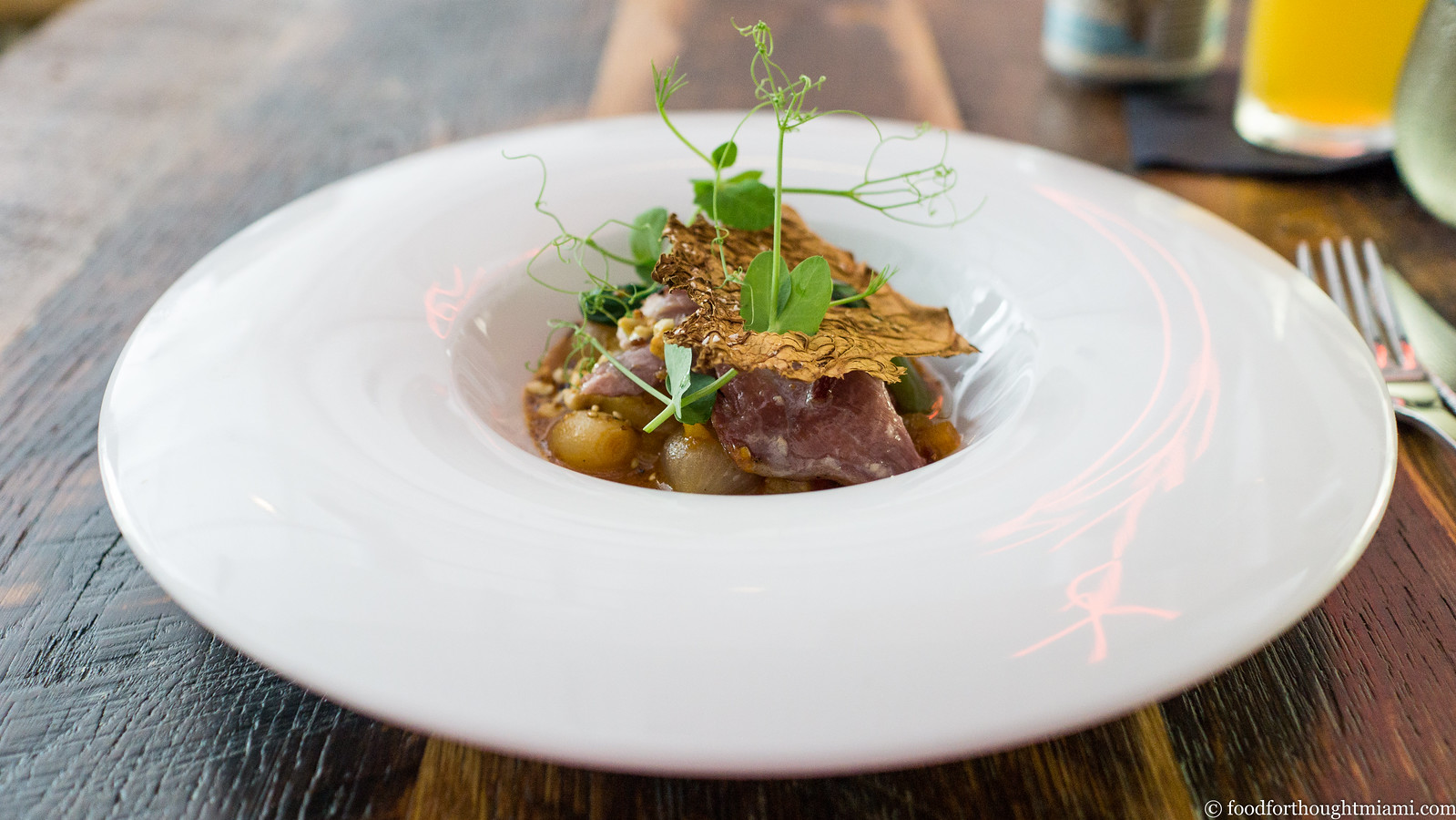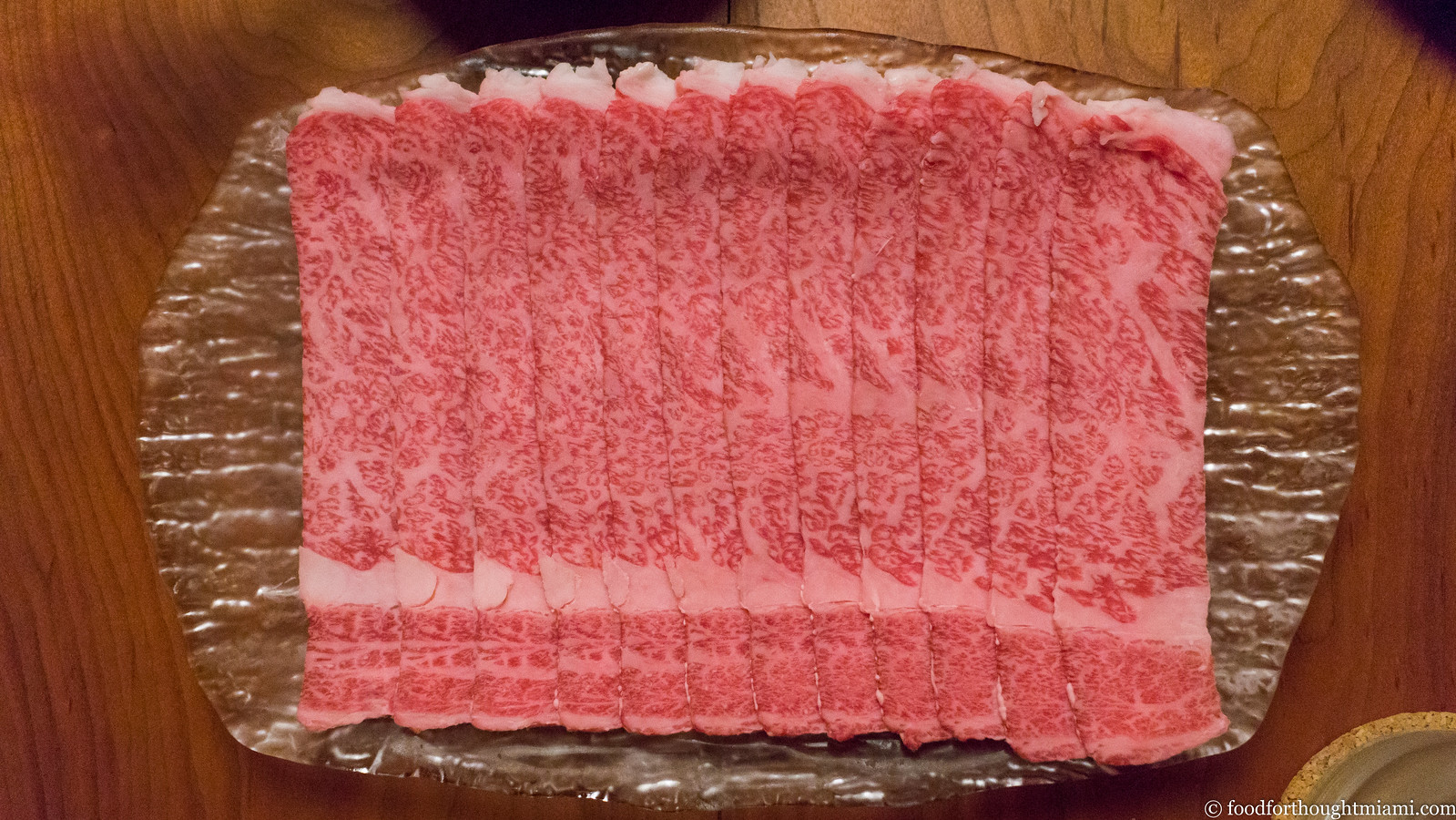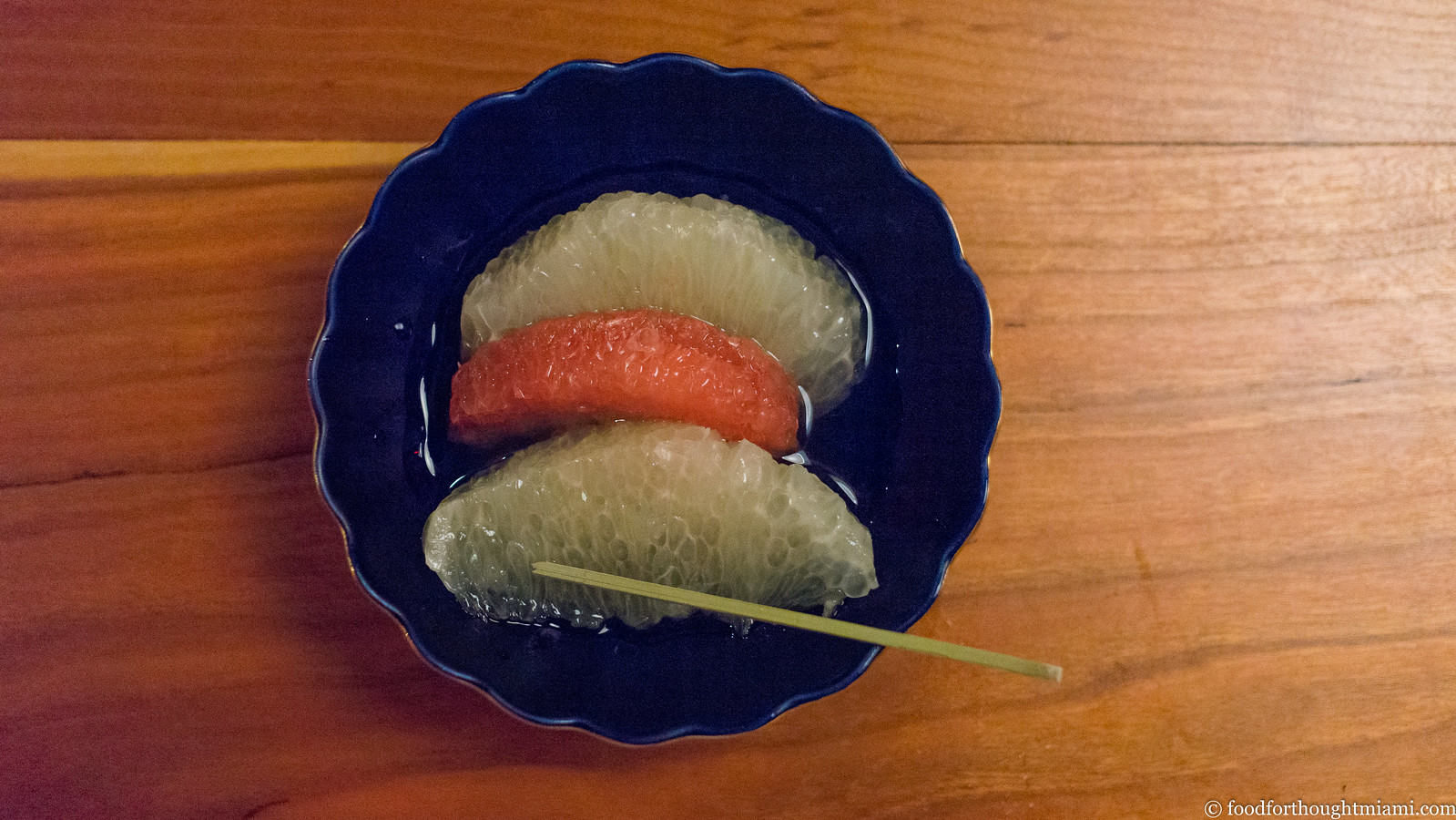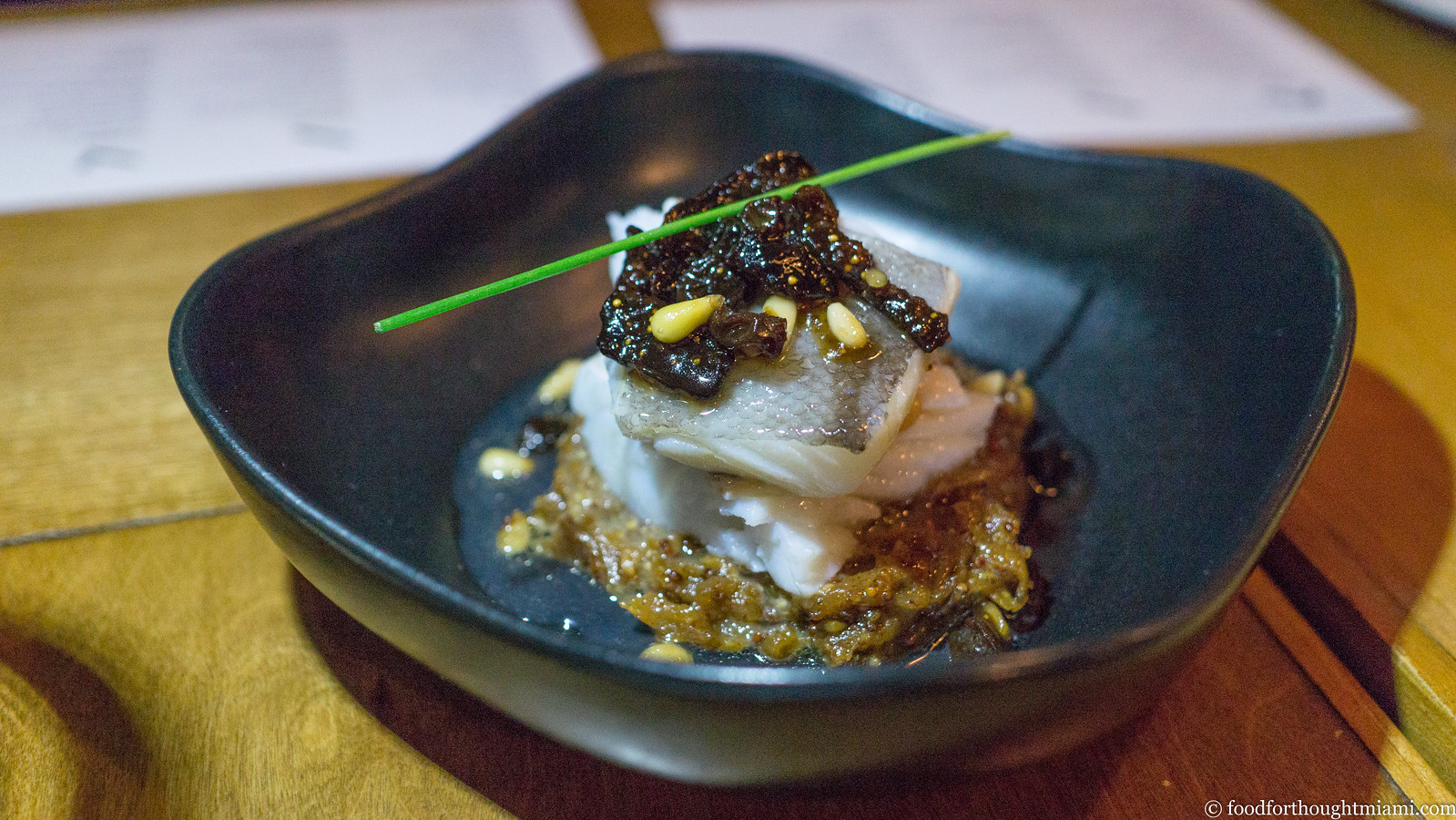Tuesday, December 8, 2015
best thing i ate last week: duck leg confit at Alter
The best thing I ate last week could easily have been the Japanese wagyu beef shabu shabu at N by Naoe which I wrote about yesterday. But as good as that was, this was still better: the duck leg confit from the lunch menu at Alter.
The duck meat is pulled off the bone and served over a pearl onion kimchi that's given an extra jolt of flavor from little "sweety drop" peppers. These bright red, teardrop-shaped chiles are simultaneously fruity and spicy, and remind me of the Brazilian biquinho peppers which Chef Micah Edelstein of the late Nemesis Urban Bistro turned me on to a few years ago. Additions of a cashew condiment and black garlic tweak the umami dial. A sheet of drisp dehydrated cabbage mimics the usual crispy skin (Hey Brad - where'd the duck skin go?). Perky pea shoots add some contrasting freshness. This was a great dish.
It can also be part of one of the best value meals in town: Alter serves a 3-course, $29 lunch which may be the most effective use of $29 you can make in Miami; even better, you can also upgrade that to a $48, 5-course lunch tasting menu. (You can see all my pictures from a recent lunch visit at the end of this Alter - Miami (Wynwood) flickr set).
Monday, December 7, 2015
first thoughts: N by Naoe Shabu Shabu - Brickell Key, Miami
Since then – as Kevin recently reminded me – I was the first to write about Naoe after its move to Brickell Key three years later, and also one of the first visitors to his side venture, N by Naoe, which he opened last year alongside Naoe in an adjoining space. N by Naoe did a pretty remarkable $80 lunch service similar to the opening salvos of a Naoe dinner, presented in a multi-tiered bento box. Alas, that is what you call a "niche market."
So N by Naoe has been repurposed. Now N by Naoe does shabu shabu.
(You can see all my pictures in this N by Naoe Shabu Shabu flickr set).
"Shabu shabu" is the Japanese onomatopoeic equivalent of "swish swish" – and more specifically, refers to the sound that thin slices of beef make as they are quickly cooked via a brief splash in hot water. "Beef cooked in hot water" doesn't sound like the most exciting meal in the world; but when you start with silky, obscenely marbled Japanese beef, and combine it with beautiful fresh vegetables in a flavorful stock, you get something magical.
It starts with water: water which comes from a well on a tiny hilltop property in Kanazawa, Japan owned by Kevin Cory's family.[1] The water is warmed on a tableside burner, and a strip of dried seaweed is added to make a kombu dashi. It's simple, but kombu is loaded with glutamates (the stuff in MSG that makes everything taste better). A couple of dipping sauces – nutty sesame, and bright citrusy ponzu – are also arranged at each diner's place setting. After a few minutes of simmering, the kombu is removed, and a platter piled with vegetables is brought to the table.
For us, there were several different kinds of mushrooms – brown buttons, oysters, wood ear, enoki – as well as napa cabbage, chrysanthemum leaves, and blocks of tofu. You toss some vegetables into the pot – some of the heartier mushrooms, and the firmer bits of the cabbage can take a while, and add their flavor to the broth, while the frilly cabbage leaves and delicate chrysanthemum may need less than a minute.
Then the centerpiece is brought to the table: wagyu from Miyazaki Prefecture, thin slices of ribeye with incredible speckled fat marbling that runs through the entire steak. You have probably heard of "Kobe beef" – in fact, you have probably heard many things called "Kobe beef" that are not in fact "Kobe beef," since "Kobe beef" can only come from Kobe, Japan, and I'm pretty sure that places like Prime 112 are not paying for Japanese beef to put into hot dogs and hamburgers, even if they're sold for $25-30; but I digress. I mention this because the beef N by Naoe uses is not called "Kobe beef" because it comes from Miyazaki Prefecture, not Hyogo Prefecture where Kobe is located. But – unlike those ridiculous hot dogs and hamburgers that call themselves "Kobe beef" – this is every bit its equal. This particular sample carries an "A5" grading with a BMS or "Beef Marbling Score" of 8 on the 1-12 scale used in Japan, and was one of the most luscious steaks I've ever tasted.[2]
You take a slice of that beef. You swish it a couple times through the broth ("shabu-shabu").[3] You swipe it through one of the dipping sauces. You eat. You pluck some of the vegetables and tofu out of the pot and do the same.[4] Repeat. And repeat again, until you and your dining companion are anxiously eyeing the last slice of beef on the platter.
It's so rich that really, that one platter is enough – but sometimes enough isn't quite enough. If you understand what I mean, then you'll be glad to know that you have the option to add on an additional half-order or full order of beef. The fixed price per person for the shabu shabu is $60 per person; an additional order of beef can be had for $72, or a half-order for one person can be had for half the price.
Around the time you are closing in on that last slice of beef, the server will deliver a bowl of perfectly cooked rice. Then the pot will be scooped up and its contents buffeted with some chopped scallions and served to you as a restorative soup. It's surprisingly flavorful, imbued with the concentrated essences of the beef and vegetables which have been cooked in the broth. The one-two of rice and soup is a traditional Japanese coda to a meal that fills up and then calms your belly.
A simple bowl of fresh fruit – here, a couple different kinds of grapefruit – closes out the meal.
This is an elemental meal that depends almost entirely on its ingredients; after all, the cooking itself is being done by unskilled amateurs. But with the outstanding quality of the beef, and those gorgeous fresh vegetables, it works. It's also a lot of fun.
N by Naoe
661 Brickell Key Drive, Miami, Florida
(reservations exclusively through SeatMe 5:15-10:45pm Su-Tu, Th-Sat, and lunch 12-6pm for parties of 8 to 16)
[1] Kidding.
[2] For further explanation of the Japanese grading system, read up at the Japan Meat Information Service Center. The letter grade is based on yield; the number grade is based on quality, including marbling as well as both the texture and color of the meat and fat.
[3] Long communal chopsticks are supplied for action involving the big pot, unless you're dining with an uncouth lout who uses the communal chopsticks to feed himself. Steve insisted this is how you show dominance in shabu shabu. I think he confused it with sumo wrestling.
[4] Pro tip: though the recommended pairing is the sesame sauce with the beef, and the ponzu with the vegetables, both Steve and I preferred to reverse it. The citrus in the ponzu nicely cuts through the fattiness of the beef, while the creamy, nutty sesame sauce adds a bit of richness to the vegetables.
[2] For further explanation of the Japanese grading system, read up at the Japan Meat Information Service Center. The letter grade is based on yield; the number grade is based on quality, including marbling as well as both the texture and color of the meat and fat.
[3] Long communal chopsticks are supplied for action involving the big pot, unless you're dining with an uncouth lout who uses the communal chopsticks to feed himself. Steve insisted this is how you show dominance in shabu shabu. I think he confused it with sumo wrestling.
[4] Pro tip: though the recommended pairing is the sesame sauce with the beef, and the ponzu with the vegetables, both Steve and I preferred to reverse it. The citrus in the ponzu nicely cuts through the fattiness of the beef, while the creamy, nutty sesame sauce adds a bit of richness to the vegetables.
Monday, November 30, 2015
best thing i ate last week: cod confit a la catalana at Cobaya Niu
Sometimes I will read a dish description and have no clue how it could possibly taste good. This was one of those. The chef was Deme Lomas, the spot was Niu Kitchen, which was playing host to our 58th Cobaya dinner on Monday night. The dish was cod with dry figs, roasted onions, mustard and honey. Why would anyone put all those sweet things with a piece of fish?
Shows what I know. Here, the residual saltiness of the rehydrated bacalao, all unctuous and shiny, was balanced against the sweetness of the figs and honey; the zing of mustard for a bit of contrast, a nest of golden caramelized onions as a bridge between savory and sweet. The combination of salt cod and honey actually has a long history in Catalan cooking, which is Chef Lomas' focus at Niu Kitchen. Here's Colman Andrews in his book "Catalan Cuisine: Europe's Last Great Culinary Secret":
Shows what I know. Here, the residual saltiness of the rehydrated bacalao, all unctuous and shiny, was balanced against the sweetness of the figs and honey; the zing of mustard for a bit of contrast, a nest of golden caramelized onions as a bridge between savory and sweet. The combination of salt cod and honey actually has a long history in Catalan cooking, which is Chef Lomas' focus at Niu Kitchen. Here's Colman Andrews in his book "Catalan Cuisine: Europe's Last Great Culinary Secret":
I remember a game I used to play with friends, in younger years, of trying to invent the most unlikely or revolting-sounding food combinations possible – things, I recall, like raw oysters with chocolate sauce and pineapple-clam cake. This dish, I imagine, must sound a bit like one of those to many readers – or at least like some mindless nouvelle (or nova) excess. In fact, though, salt cod with honey is neither nouvelle nor revolting. It's an old Catalan mountain dish, first mentioned in print in the seventeenth century and said to have been an invention of necessity – the union of two easily stored, well-preserved ingredients, eaten together simply to provide a kind of calorie-loading, essential for survival in cold climates during the cropless winter months.The most exciting dishes can be those you don't expect to work. This one was the best thing I ate last week.
Subscribe to:
Posts (Atom)







